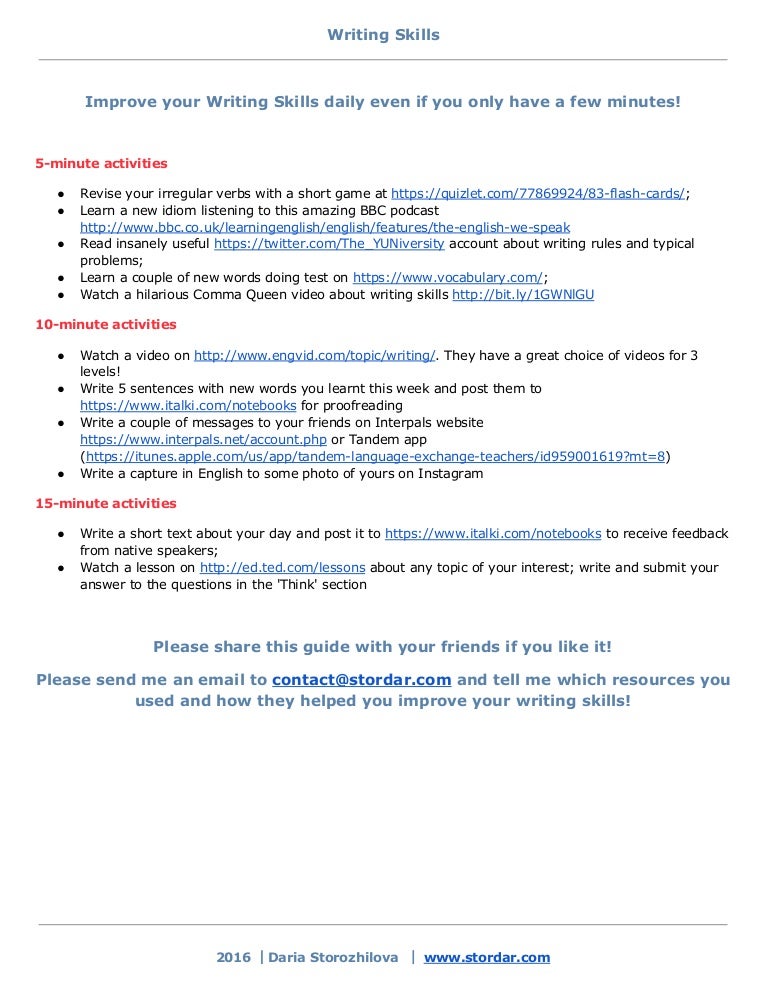


There's research, planning, outlining, drafting, and editing. Instead, the intention is to build your familiarity with uncommon words so that as you develop your writing and editing skills, you’ll become more comfortable reaching for these terms.Ī lot of thought goes into most writing. Realistically, you're not going to remember 100% of the words you learn. If possible, try to include the word in another piece of writing you do later in the day. Spend a few minutes writing 3-5 practice sentences that include the word.
10 minute writing challenge free#
Subscribe to a free service like Merriam-Webster’s word of the day or pick up a book like this vocabulary builder.So, how do you build a useful vocabulary? This method keeps your writing accessible while also giving readers something to discover along the way. A better way is to build your vocabulary so that you can occasionally sprinkle in interesting words that more accurately describe the ideas you’re writing about. Generally, this only serves to confuse them. The not-so-great method is to string together several large, scholarly words in order to impress your readers. There’s a good way and a bad way to use unfamiliar words in your writing. Did it make them feel like they were there? If not, what could be improved? Instead, it picks and chooses the most important parts that a reader needs to know.įor extra practice, show your paragraphs to your friends and family and ask for their reactions. A successful description is rarely an exhaustive one. The goal of this exercise is for the paragraph you write to transport you back to that place. Later that day, write a paragraph describing the setting using the notes you took earlier.Aim to capture at least a few features for each sense: what do you smell, hear, see, feel, and taste? Next, spend a few minutes writing down the most memorable elements in a bulleted note style.No need to look for anything specific, just see what you end up noticing.


The goal is simply to reopen your mind and get the creative words flowing once again. When writing out your ideas, feelings, and arguments, remember they don’t need to create a cohesive narrative. Try to write without any breaks until the timer goes off. On a piece of paper or computer, begin reacting to the item.Find a news story, trending video, or hit song that stirs up a positive or negative emotion in you.However, one way to jumpstart your creative output is by inciting a reaction. If your input is empty from a lack of reading, conversations, and new experiences – then you’re output will suffer. That’s because they haven’t yet understood that creativity is an input-output mechanism. Many writers sit at their stations only to wind up staring at a blank page. The most difficult part of writing is having something to say. This exercise will highlight both the good and bad in other writers' styles so that you can pick and choose the elements that make sense for you. But don't worry about losing your own voice in the process. The more you engage in this practice, the more you'll adopt parts of their style as your own. You’ll get an intimate sense of their style, word choice, and organization. This practice of transcribing their work will give you a hands-on experience of what their writing feels like. Option 2: On a computer, use a tool like Google Docs, Microsoft Word, or Notion to type their content word-for-word.Option 1: On a physical notebook or sheet of paper, rewrite the text word-for-word.Choose a section of the material, like a single chapter or a few paragraphs, to focus on.Get a copy of the material you want to learn from (e.g., book, article, etc.).There are two ways to approach this exercise. One of the best ways to learn from an expert writer is to transcribe their work. Two questions generally come to mind for the aspiring writer: How did they do that? and How can I learn to do that too? It could be a book, letter, speech, or an article. The desire to become a great writer often comes as the result of reading a great piece of writing.


 0 kommentar(er)
0 kommentar(er)
